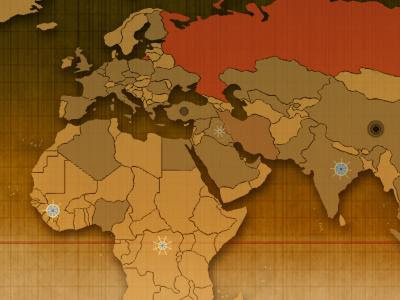Okay, bear with me here, because when I first saw this, I thought it was about how to take photographs of miniature model landscapes - something I'd much rather leave to the more arts-and-crafty among us. But that's not what this is about.
This is about taking an ordinary photo, say of a real city or landscape, and making it look like it's depicting miniature models. Like the photo below... Toy boats on a miniature lake, right?

Nope, it's actually just a doctored image of a real life coastal landscape.
Trivial? Useless? Maybe, but check out how it's done.
TiltShiftMaker is a site that does just that, and it does it very simply, by just reducing the depth of field of the photo: the portion of the photo that looks sharp and in-focus. Turns out, the shallower the depth of field, the smaller and closer the objects in a photo look, to the point of making real landscapes and buildings look like nothing more than miniature models.
The reason this works is that when we look at something small and close to our eyes, the portion of our field of vision that is in focus is very small. Conversely when we look at something very large and far away, the potion that is in focus is actually much greater. So when we notice a shallow depth of field, regardless of what we're really looking at, our brain signals SMALL and CLOSE (rather than BIG and FAR) and we use this to make a determination as to what we might be looking at - for example, tiny model boats as opposed to a life-size coastal landscape.
What fascinates me about this is that we do this entirely unconsciously. I didn't know anything about photography or depths of field before looking into this -- in fact I had to wiki
depth of field to make sure I was talking about the right concept. But on some level, my brain did know. It's just one thing among a huge quantity of information that we unconsciously process in order to make deductions about the world around us from what is essentially a pretty limited set of sensory perceptions.
Here's other related example - it's a pretty common optical illusion.
Look at the image below... Concave or convex?

To virtually everyone the left side looks like buttons, while the right side looks like shallow holes. The interesting question, however, is why.
The answer is that we make the determination based on how the disks are shaded, interpreting the colors as light and shadow. If there is one thing we know intuitively (though perhaps not fully consciously) about light is that it tends to come from above - from the sun or from lamps. So a disk that is
lighter on top we interpret as a protruding button catching light from above, whereas a disk that is
darker on top we interpret as a hole shaded from above and catching light on the bottom.
In a way our minds are incredibly ingenious at noticing patterns in our perceptions and using them as clues to navigate the world around us, basically making educated guesses along the way.
But know enough about how the mind works, and you can easily trick it!
Via
Apartment Therapy.













